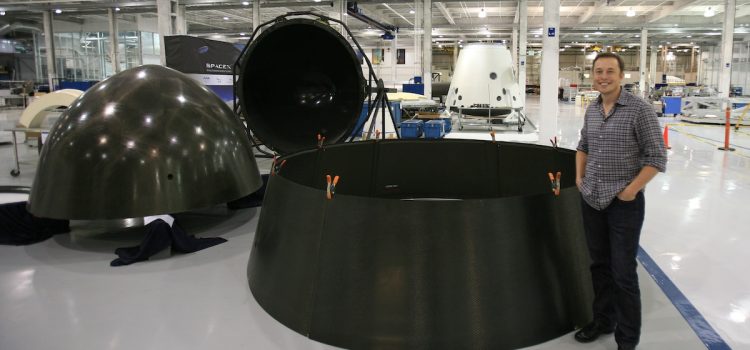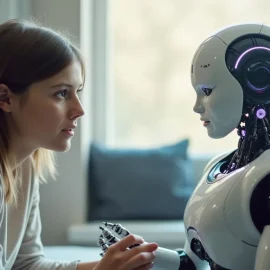
What drives one of the world’s most innovative entrepreneurs to pursue such diverse and ambitious ventures? How have Elon Musk’s projects revolutionized industries from automotive to space exploration?
In his book Elon Musk, Segun Thompson explores how the groundbreaking visionary transformed multiple industries through Tesla, SolarCity, SpaceX, and OpenAI. Elon Musk’s projects share a common thread: pushing boundaries to create sustainable solutions for humanity’s biggest challenges.
Continue reading to dive into the fascinating journey of an entrepreneur who’s reshaping our future, one groundbreaking innovation at a time.
Image credit: Steve Jurvetson from Menlo Park, USA, (License CC BY 2.0, via Wikimedia Commons)
Elon Musk’s Projects
Thompson examines Elon Musk’s projects in the world of electric vehicles and sustainable energy, primarily through Tesla, SolarCity, SpaceX, and OpenAI. These endeavors, driven by Musk’s goals and vision, challenged existing industries and created the path for a future that’s more sustainable.
Tesla Transformed the Auto Industry and Combustion Engines
Thompson emphasizes the crucial contribution Musk made in evolving Tesla from a floundering startup to a top electric vehicle producer. Musk’s vision, along with his readiness to embrace risk, challenged the dominance of combustion engines and paved the way for electric vehicles’ widespread adoption.
Musk’s goal for Tesla was not simply to build electric cars but to demonstrate their desirability and practicality, thereby accelerating the world’s transition to sustainable transportation. Thompson points out that this idea was considered audacious during a period when the auto industry doubted whether EVs were feasible. Nevertheless, Musk stayed resolute, believing mobility through electric power could bring transformation.
| Shortform Notes – Tesla invested in creating a network of Supercharger stations to address range anxiety and make long-distance travel feasible for EV owners. – The growth of the EV market can stimulate economic development through the creation of new jobs in manufacturing, technology, and infrastructure sectors. – Musk aimed to shift consumer perceptions by producing high-performance, stylish electric vehicles that could compete with luxury gasoline cars, thereby broadening the appeal of EVs. – There was a general perception that EVs were slow, unattractive, and suitable only for niche markets, which made mainstream adoption seem unlikely. – The shift to electric mobility necessitates the development of charging infrastructure, which can lead to improvements in energy grids and urban planning. |
Thompson details Tesla’s early challenges, including financial difficulties, technological hurdles, and delays in production. Musk’s steadfast faith in Tesla was evidenced by his significant personal investment that helped Tesla weather these storms. His proactive and persistent approach, coupled with his ability to attract top talent, were crucial in navigating Tesla through these turbulent times and establishing it as a major force in the car industry.
SolarCity’s Solutions for Accessible, Affordable Energy
Thompson discusses SolarCity, co-founded by Musk’s cousins but heavily influenced by Musk’s goals, as another example of his commitment to a sustainable future. SolarCity aimed to deliver solar power solutions, often perceived as expensive and complex, in a way that made them more affordable and accessible to the masses.
Musk saw SolarCity as a central component of a broader ecosystem for sustainable living, one that integrated the use of electric vehicles with solar power generation and storage. This integrated approach aimed to reduce dependence on fossil fuels and transition toward a cleaner, more sustainable energy future.
| Shortform Notes – The integrated energy ecosystem is not limited to the US; it aims to have a global impact, addressing energy needs and sustainability challenges worldwide. – By promoting solar energy, Musk aimed to significantly cut carbon emissions, addressing climate change by providing a cleaner alternative to coal and natural gas. – Reducing reliance on fossil fuels can also enhance energy independence for countries, decreasing their vulnerability to geopolitical tensions and fluctuations in global oil markets. – Achieving this vision entails advocating for supportive policies and regulations that encourage the adoption of renewable energy and the development of infrastructure necessary for widespread implementation. |
Tesla’s SolarCity Acquisition
Thompson states that the acquisition of SolarCity by Tesla in 2016 further solidified Musk’s vision for a sustainable energy ecosystem. Innovations such as the Solar Roof—which seamlessly integrates solar cells into roofing materials—and the Powerwall—a battery for home use that keeps energy from the sun—serve as prime examples of this synergy. This acquisition, Thompson argues, represented a pivotal moment in Musk’s journey toward a sustainable future by aligning Tesla’s expertise in electric vehicles with SolarCity’s solar-power focus.
(Shortform note: The acquisition’s success in aligning the two companies’ focuses is debatable, as Tesla has since shifted its strategy, including reducing its solar division workforce and prioritizing electric vehicle production.)
SpaceX’s Advancements in Rocket Technology and Reusable Spacecraft
Thompson describes SpaceX’s achievements as nothing short of groundbreaking, positioning the company as a dominant force in contemporary space exploration. SpaceX, fueled by Musk’s aspirations and unwavering determination, overcame initial skepticism and setbacks to achieve milestones previously thought unattainable for a private company.
Central to SpaceX is Musk’s audacious goal of colonizing Mars. Thompson illustrates how this goal goes hand in hand with SpaceX’s core mission: to lower the cost of space travel and make it more accessible. Musk strongly believes that, for the human race to endure long-term, we must inhabit multiple planets.
Thompson cites SpaceX’s successful partnership with NASA, starting when the Dragon spacecraft docked at the International Space Station (ISS), as a turning point in the space industry. This collaboration showed that privately owned enterprises could effectively participate in the exploration of outer space alongside governmental organizations. The Falcon 9 rocket, developed by SpaceX, marked a major breakthrough in space technology. Its partial reusability dramatically lowered the cost of launching payloads into space. According to Thompson, this cost reduction was crucial, as it not only made space access more affordable but also enabled SpaceX to pursue more ambitious goals. One of these goals is the Starship program, which Musk envisions as the key to making human travel between planets possible.
| Shortform Notes – SpaceX’s Dragon spacecraft has been used for numerous resupply missions to the ISS, providing essential supplies and equipment for astronauts and scientific research. – Collaborations with private companies allow NASA to share the financial and technical risks associated with space missions, enabling more ambitious projects. – By reducing the cost per launch, SpaceX has made space more accessible to a wider range of clients, including commercial satellite companies and scientific research organizations. – The experience and revenue generated from Falcon 9 launches have been instrumental in funding and developing the Starship program, which aims to enable human travel to Mars and beyond. – Musk envisions Starship as a key component in establishing a self-sustaining human colony on Mars. – This aligns with his broader goal of making life multiplanetary to ensure the long-term survival of humanity. |
Musk’s Involvement in OpenAI
Thompson delves into Musk’s involvement with OpenAI, discussing his foresight in recognizing the potential dangers of unchecked artificial intelligence. Musk’s dedication to OpenAI stems from his strong apprehension about the ethical ramifications of AI, fearing its potential to exceed human capabilities and become unmanageable.
Musk is convinced that openness and cooperation are crucial for mitigating the risks posed by cutting-edge AI. OpenAI, with Musk’s influence, promotes the open sharing of research findings and fosters discussions about the societal impact of AI.
| Shortform Notes – Sharing research findings openly can accelerate innovation by allowing researchers to build on each other’s work, leading to faster advancements in AI technology. -OpenAI collaborates with various academic, governmental, and corporate partners to advance AI research. This collaboration is part of its strategy to foster a diverse ecosystem of AI development. – Understanding AI’s societal impact is crucial for developing appropriate regulations and policies that ensure safety and accountability. |
Musk’s caution about the possible risks of unchecked AI, coupled with his involvement in OpenAI, have ignited crucial conversations surrounding the safety and ethics of AI. Thompson argues that Musk has played a key role in advancing AI development responsibly and ensuring this transformative technology benefits humanity.






